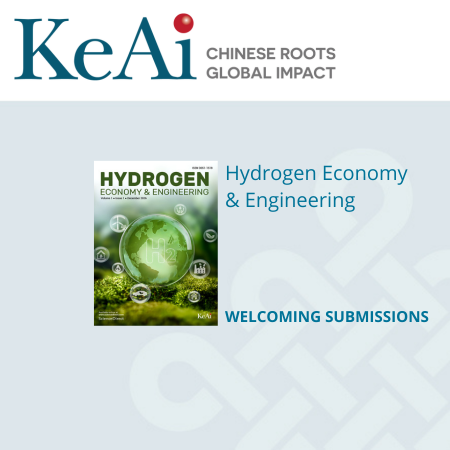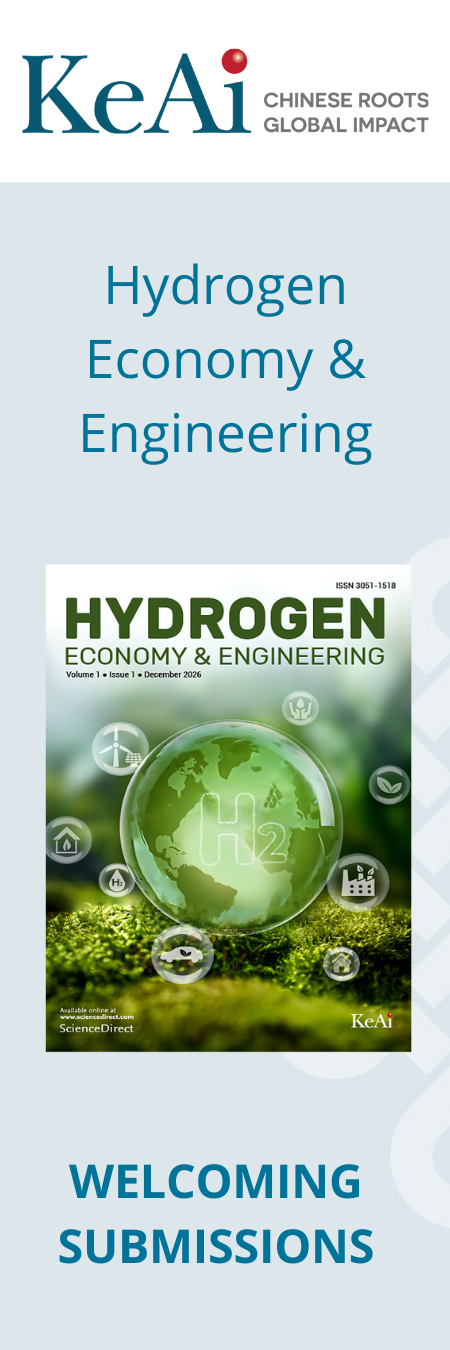Recent progress on synthesis of ZIF-67-based materials and their application to heterogeneous catalysis
February 2022
In recent years, an increasing amount of interest has been dedicated to the synthesis and application of ZIF-67-based materials due to their exceptionally high surface area, tunable porosity, and excellent...
Catalytic conversion of lignocellulosic biomass into chemicals and fuels
February 2023
In the search of alternative resources to make commodity chemicals and transportation fuels for a low carbon future, lignocellulosic biomass with over 180-billion-ton annual production rate has been...
Sustainable aviation fuels from biomass and biowaste via bio- and chemo-catalytic conversion: Catalysis, process challenges, and opportunities
June 2025
Sustainable aviation fuel (SAF) production from biomass and biowaste streams is an attractive option for decarbonizing the aviation sector, one of the most-difficult-to-electrify transportation sectors....
Synthesis strategies of covalent organic frameworks: An overview from nonconventional heating methods and reaction media
December 2023
Covalent organic frameworks (COFs), as an emerging class of porous crystalline materials constructed by covalent links between the building monomers, have gained tremendous attention. Over the past...
Advances in particulate matter filtration: Materials, performance, and application
June 2023
Air-borne pollutants in particulate matter (PM) form, produced either physically during industrial processes or certain biological routes, have posed a great threat to human health. Particularly during...
Lignin-based carbon fibers: Formation, modification and potential applications
August 2022
As an aromatic polymer in nature, lignin has recently attracted gross attention because of its advantages of high carbon content, low cost and bio-renewability. However, most lignin is directly burnt...
Application of metal organic framework in wastewater treatment
June 2023
Water pollution is an increasingly serious environmental problem because many pollutants have carcinogenic effects on humans and aquatic organisms. Metal organic framework (MOF), made up of metal ions...
Recent progress on photothermal nanomaterials: Design, mechanism, and applications
July 2025
Photothermal energy conversion represents a cornerstone process in the renewable energy technologies domain, enabling the capture of solar irradiance and its subsequent transformation into thermal energy....
Prelithiation strategies for silicon-based anode in high energy density lithium-ion battery
October 2023
Green energy storage devices play vital roles in reducing fossil fuel emissions and achieving carbon neutrality by 2050. Growing markets for portable electronics and electric vehicles create tremendous...
Direct seawater splitting for hydrogen production: Recent advances in materials synthesis and technological innovation
January 2025
Direct seawater splitting has emerged as a popular and promising research direction for synthesising clean, green, non-polluting, and sustainable hydrogen energy without depending on high-purity water...
Mechano-driven chemical reactions
May 2025
Traditional chemical processes often generate substantial waste, leading to significant pollution of water, air, and soil. Developing eco-friendly chemical methods is crucial for economic and environmental...
Magic of hydrogen spillover: Understanding and application
December 2022
The hydrogen spillover effect (HSPE) plays an important role in heterogeneous catalysis and hydrogen storage as an interfacial phenomenon, which facilitates the improvement of hydrogen storage properties...
Organic solvent nanofiltration membranes for separation in non-polar solvent system
February 2025
Membrane technology holds significant potential for augmenting or partially substituting conventional separation techniques, such as heat-driven distillation, thereby reducing energy consumption. Organic...
Research progress of lignin-derived materials in lithium/sodium ion batteries
February 2025
With the increase of energy consumption, the shortage of fossil resource, and the aggravation of environmental pollution, the development of cost-effective and environmental friendly bio-based energy...
Machine learning for membrane design and discovery
January 2024
Membrane technologies are becoming increasingly versatile and helpful today for sustainable development. Machine Learning (ML), an essential branch of artificial intelligence (AI), has substantially...
Antibiotics-heavy metals combined pollution in agricultural soils: Sources, fate, risks, and countermeasures
May 2025
Agricultural soil is related to food security and human health, antibiotics and heavy metals (HMs), as two typical pollutants, possess a high coexistence rate in the environmental medium, which is extremely...
Progress in electrolytes for rechargeable Li-based batteries and beyond
April 2016
Owing to almost unmatched volumetric energy density, Li-based batteries have dominated the portable electronic industry for the past 20 years. Not only will that continue, but they are also now powering...
A comprehensive review on recent progress in aluminum–air batteries
July 2017
The aluminum–air battery is considered to be an attractive candidate as a power source for electric vehicles (EVs) because of its high theoretical energy density (8100 Wh kg−1), which is significantly...
Overview of acidic deep eutectic solvents on synthesis, properties and applications
January 2020
This review divides the acidic deep eutectic solvents (ADES) into Brønsted and Lewis DES according to their diversity of acidic character. The hydrogen bond donors and halide salts for formulating an...
Advanced microwave synthesis strategies for innovative photocatalyst design
August 2025
Amidst environmental pollution and the energy crisis, photocatalytic technology has emerged as a potent tool for promoting clean energy and environmental preservation. However, the promotion and widespread...
Recent progress on the development of non-fluorinated proton exchange membrane-A review
September 2025
Proton exchange membranes (PEMs) are widely employed in energy conversion and storage devices including fuel cells (FCs), redox flow batteries (RFBs) and PEM water electrolysis (PEMWE). As one of the...
A review on the synthesis of transition metal nitride nanostructures and their energy related applications
April 2023
Transition metal nitrides (TMN) have recently grabbed immensely appealing as ideal active materials in energy storage and catalysis fields on account of their remarkable electrical conductivity, excellent...
MOF synthesis using waste PET for applications of adsorption, catalysis and energy storage
November 2024
Polyethylene terephthalate (PET) as one of non-degradable wastes has become a huge threat to the environment and human health. Chemical Recycle of PET is a sustainable way to release 1,4-benzenedicarboxylic...
Improved methanol synthesis performance of Cu/ZnO/Al2O3 catalyst by controlling its precursor structure
August 2022
Methanol, a versatile chemical, fuel additive and potential H2 carrier, has attracted great attention. Despite of the wide industrialization, improvement of Cu-based methanol-synthesis catalysts is...
Review on lithium metal anodes towards high energy density batteries
December 2023
Lithium metal anode (LMA) is a promising candidate for achieving next-generation high-energy-density batteries due to its ultrahigh theoretical capacity and most negative electrochemical potential....


